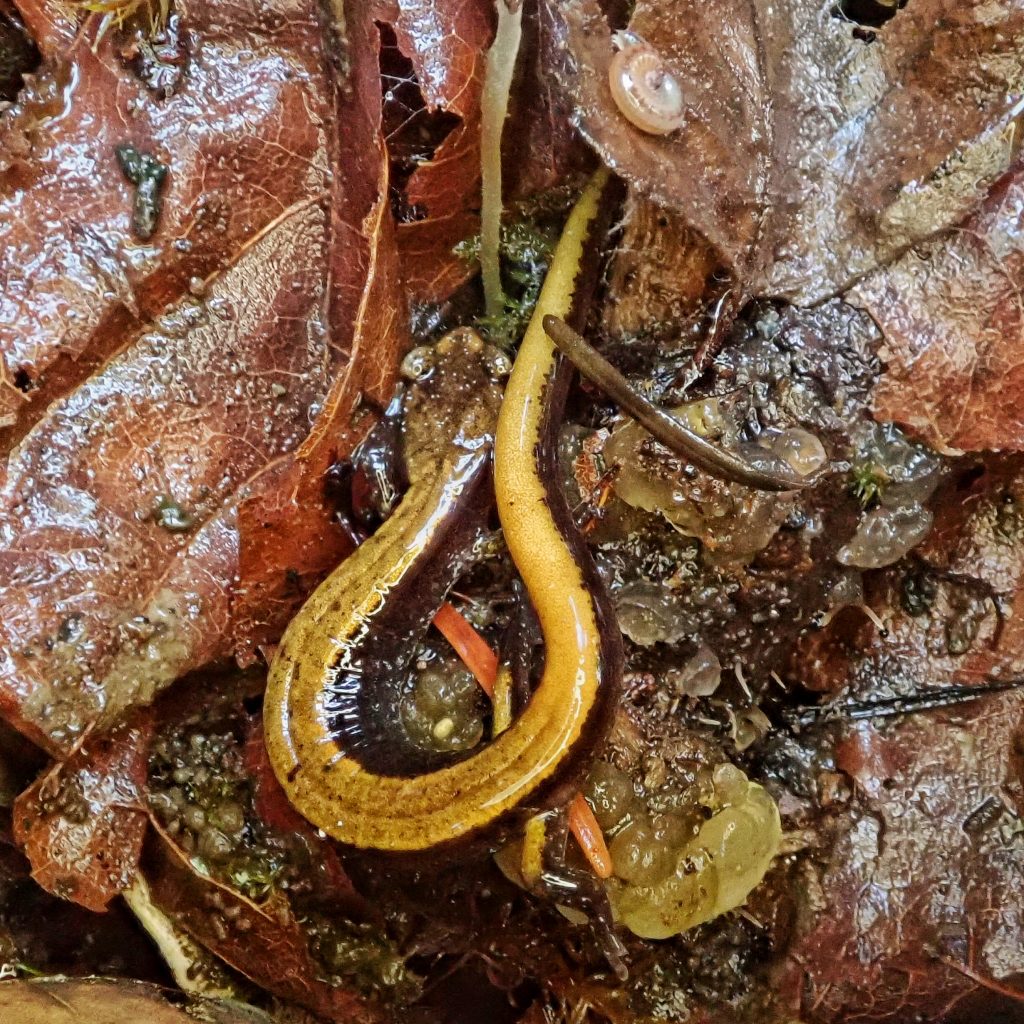
Next up on my cliff inhabitants survey is the Western Red-backed Salamander. The books say this is the most common salamander west of the Cascades, and my experience is that it is the one most commonly found. Certainly the most photographed by me! They are always a welcome sight, not least of all because their vivid dorsal stripe is often the most vibrant color to be found in the gray brown gloom of a winter forest.
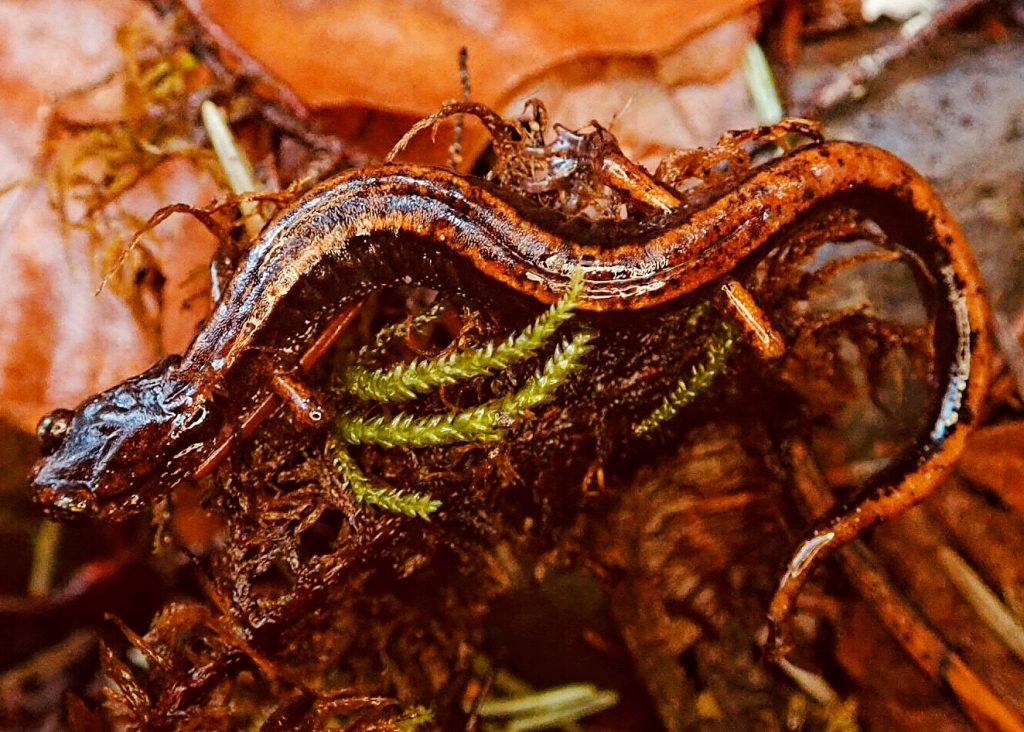
They can be found under almost anything that shelters them from sun and dehydrating air, although they can tolerate lower humidity habitats better than any of our other salamanders. I found the one at the cliff under maple leaves, but most of my Plethodon vehiculum have come from under branches, logs, and rocks.
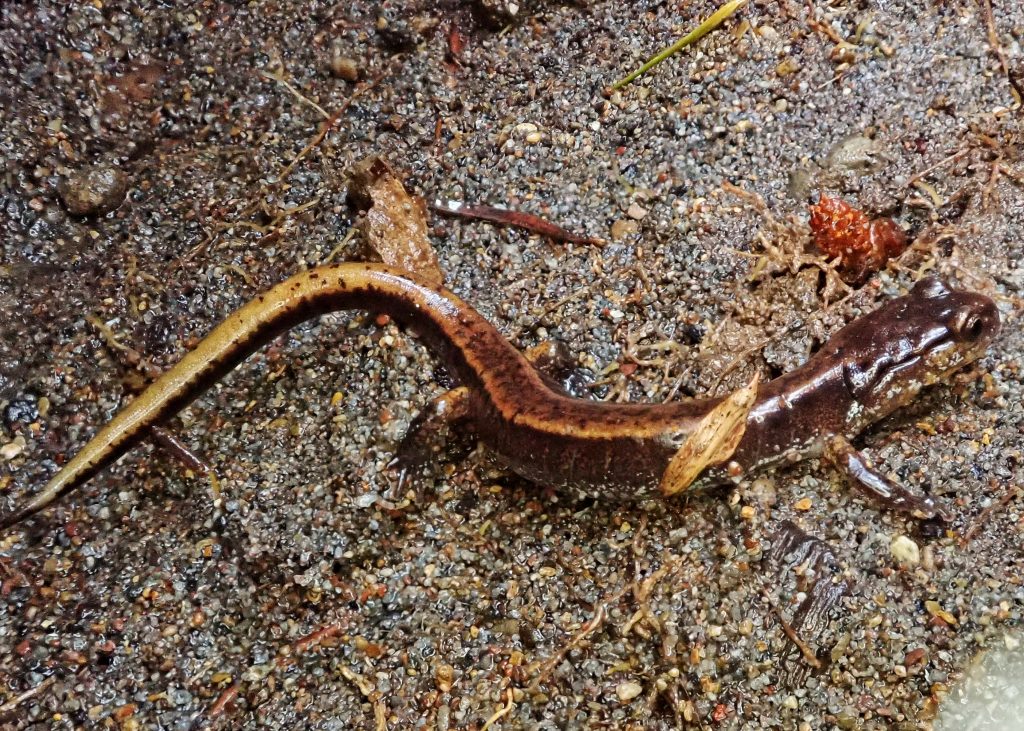
In my rock climbing days I would occasionally find one under a clump of moss I was removing to utilize the shelf beneath it as a handhold. I’ve always wondered how they arrived on some of those ledges, and if there was actually enough food to sustain them there. But they are known to occupy small territories, although they are also not territorial. One study found that Dunn’s Salamanders could easily displace Western Red-backs merely by occupying the space.
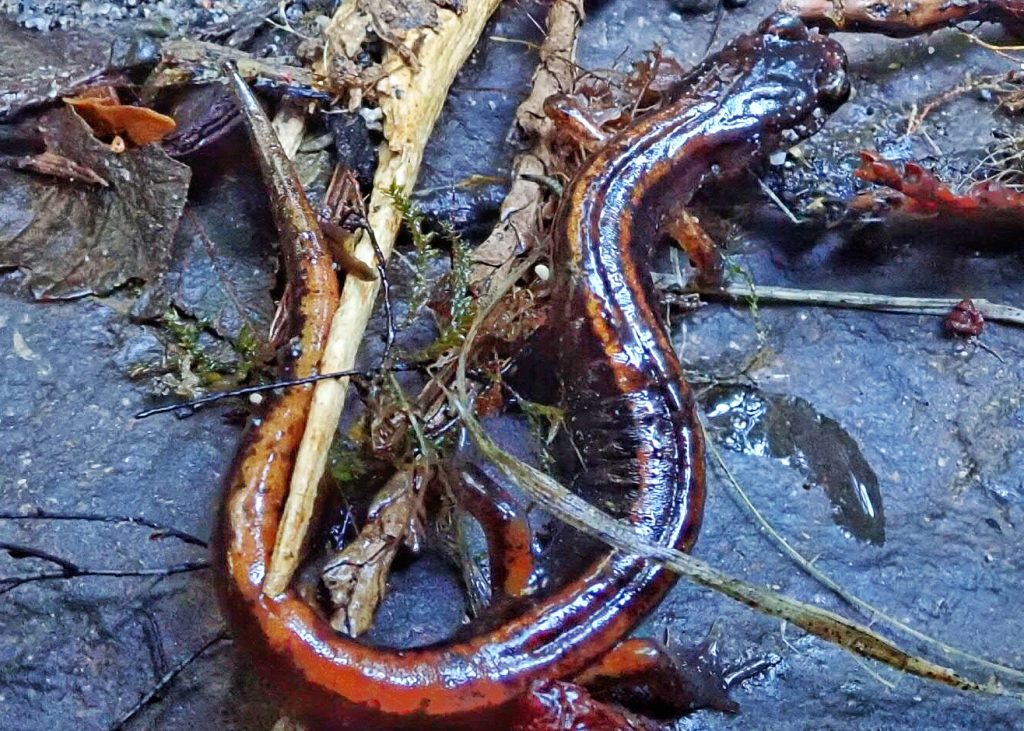
Males will do battle over females though, lust, as usual, emboldening their baser nature. Apparently salamander females are more forgiving of toxic masculinity than human females, who tend to reject the winner, and the loser, once guys start acting stupid and treating them like a possession to be won.
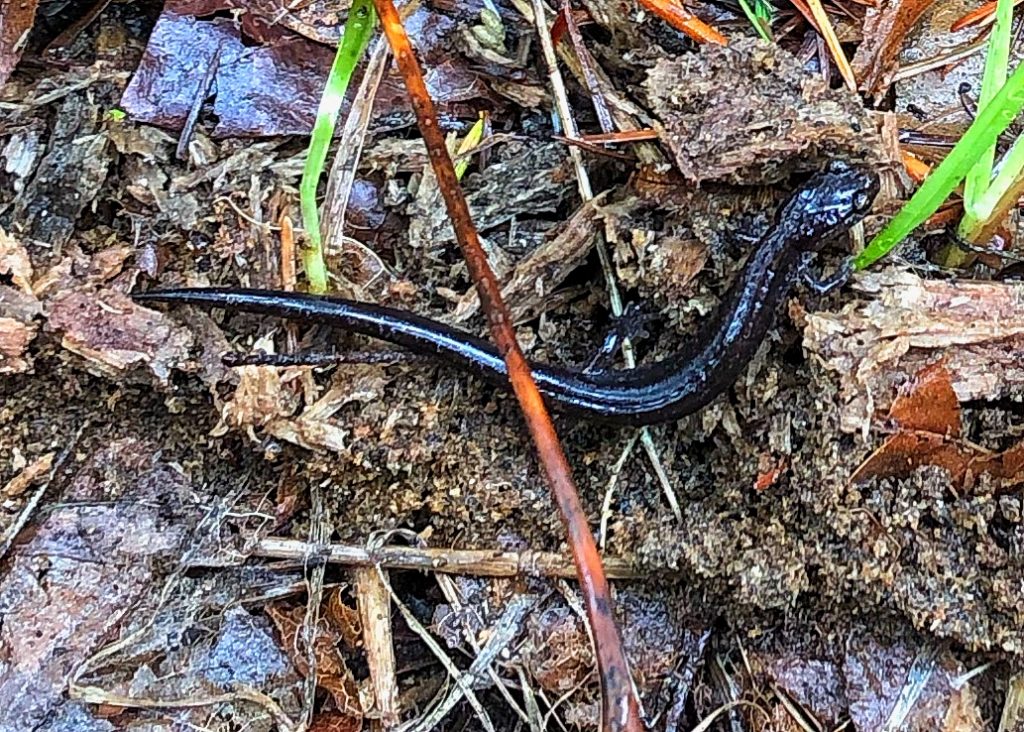
Description– Small (snout to vent length up to 58mm; tail about as long as body), slender brown to grayish black salamander with a broad, reddish orange,yellow, olive, or tan stripe down the back that extends to the end of the tail and is usually well defined and fairly even at its margins. However stripeless, melanistic (all dark), amelanistic (mostly colored the same as the stripe),and even piebald, individuals (and sometimes whole, local populations) do occur. The upper legs are often the same color as the stripe.
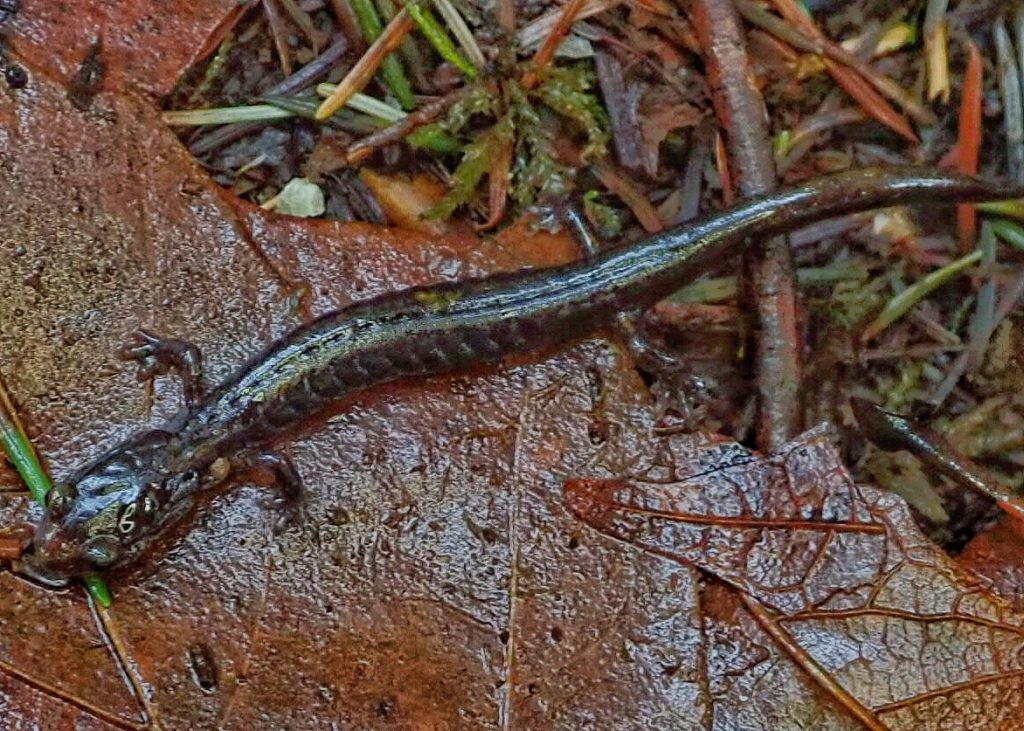
Similar species– On Dunn’s Salamander (Plethodon dunni) the stripe doesn’t reach the end of the tail; Long-toed Salamander (Ambystoma macrodactylum) is up to an inch longer in the body, has the eponymous long 4th toes of the hind feet, and a keeled tail, unlike the rounded tail of Plethodon vehiculum; Larch Mtn Salamanders (Plethodon larselli) are rare, the dorsal stripe is unevenly edged, and the outer toe of the hind foot is very small; Van Dyke’s Salamander (Plethodon vandykei) have longer legs, parotoid glands at the rear side of the head, and their dorsal stripe is not as even on the margin; Del Norte Salamander (Plethodon elongatus) is bigger, with a longer tail and shorter legs, and their range only overlaps in sw Oregon.
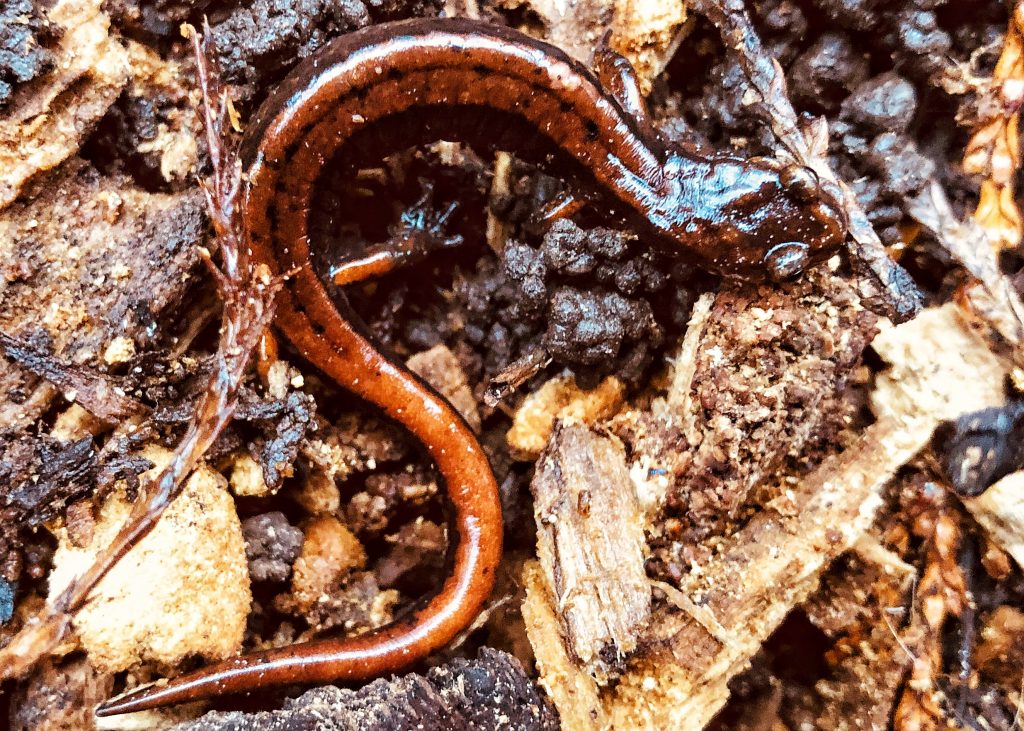
Habitat– Mesic forests and talus slopes up to 3500’ elevation
Range– West of the Cascades from BC south through most of Oregon. It is not found south of the Rogue River.
Eats– a wide variety of arthropods and other invertebrates.
Eaten by– Garter snakes, birds, shrews, and other small carnivorous mammals.
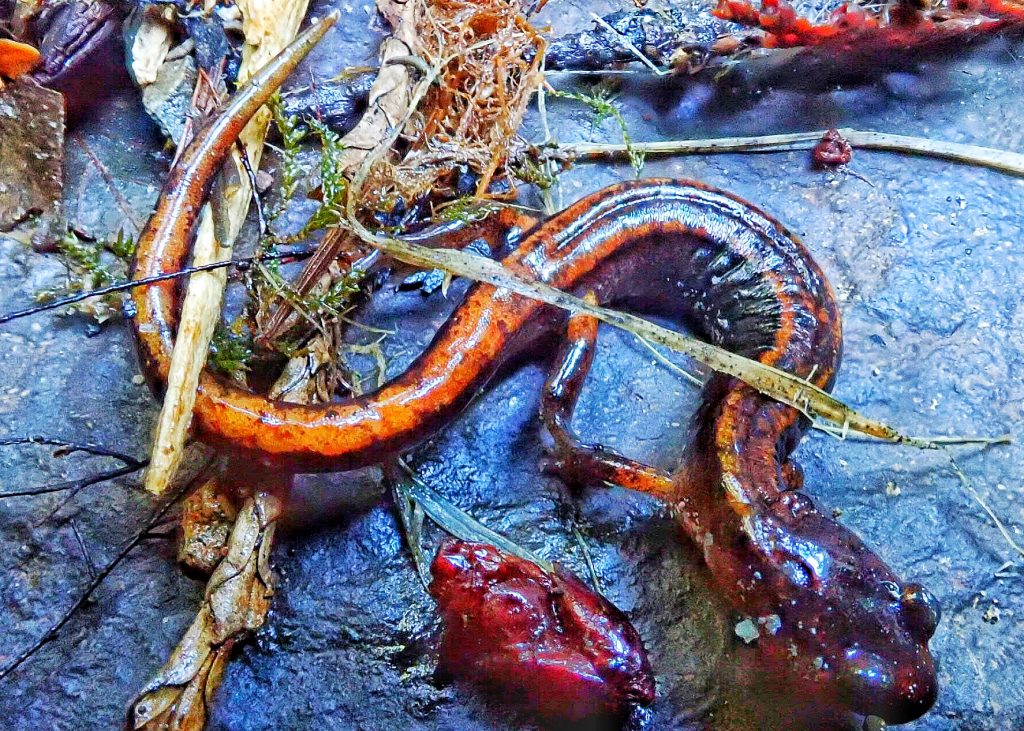
Adults active– Year around, although they go underground during the warmest and coldest times. Most active in fall and winter, which is their breeding season. Primarily nocturnal.
Etymology of names– Plethodon means ‘many teeth’ in Greek, and refers to the rows of parasphenoid teeth on the posterior roof of their mouth. And vehiculum is Latin for ‘conveyance’ and refers to the fact that the male carries the female on its back during courtship.
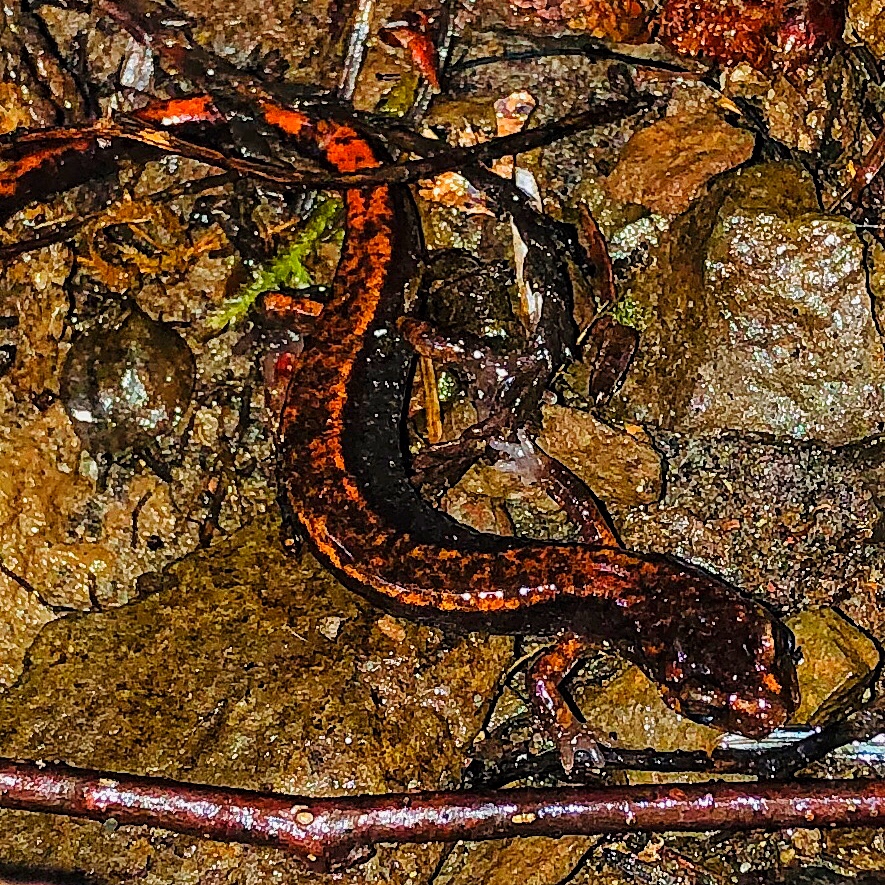
https://amphibiaweb.org/cgi/amphib_query?where-genus=Plethodon&where-species=vehiculum
http://canadianherpetology.ca/species/species_page.html?cname=Western%20Red-backed%20Salamander
https://en.m.wikipedia.org/wiki/Western_redback_salamander
https://nhpbs.org/wild/westernredbackedsalamander.asp
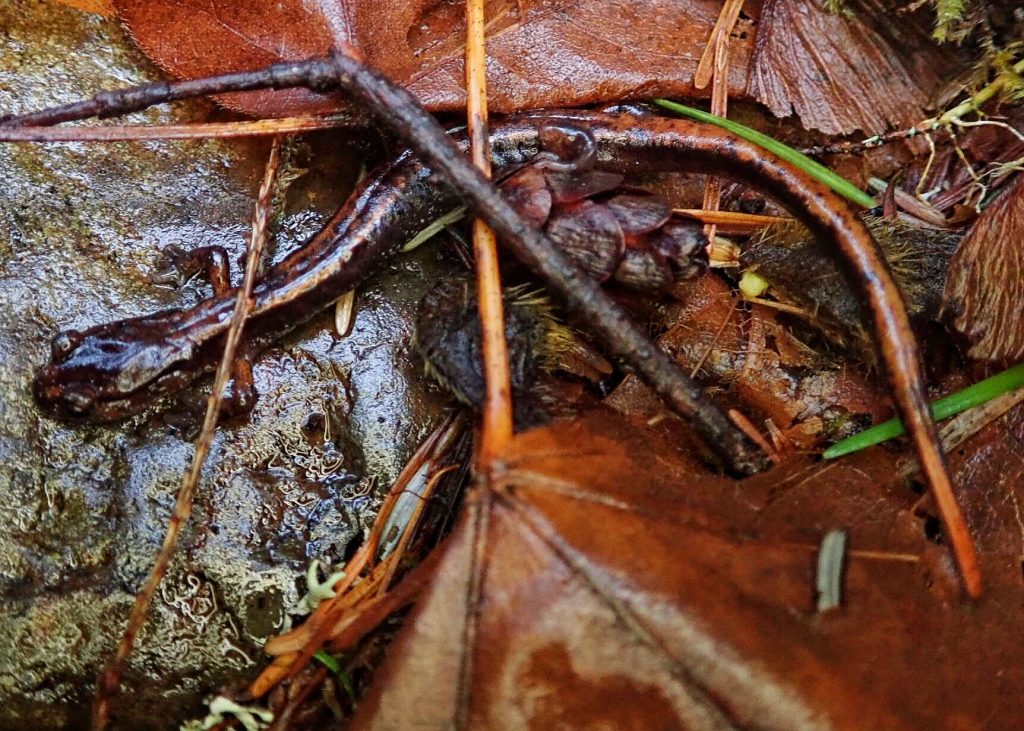
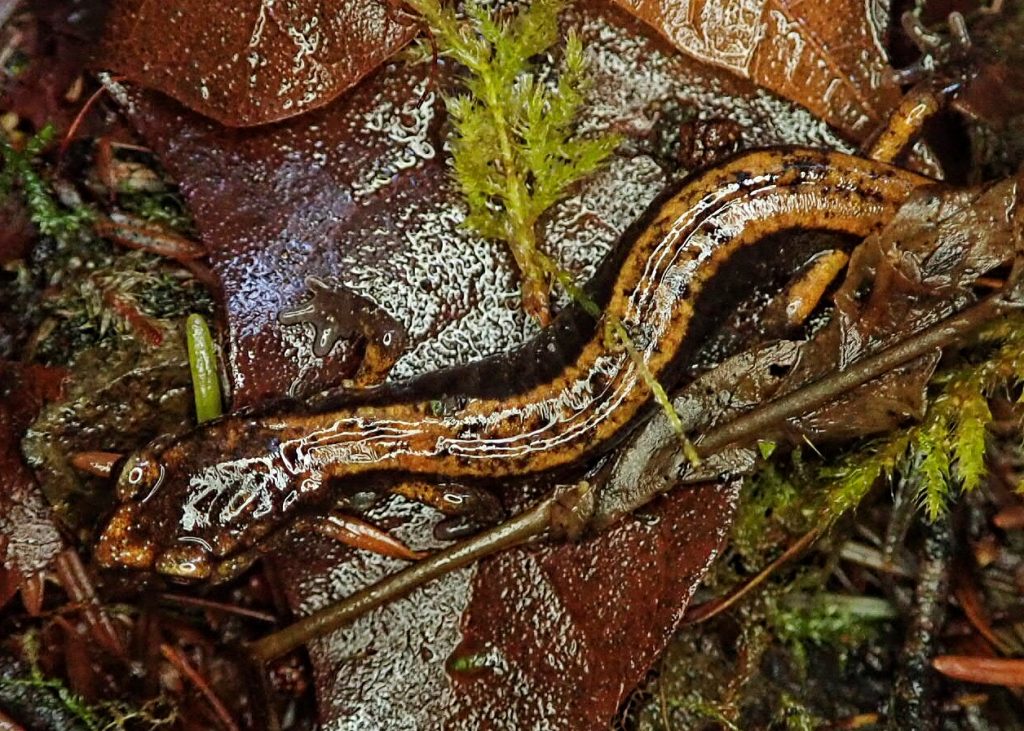
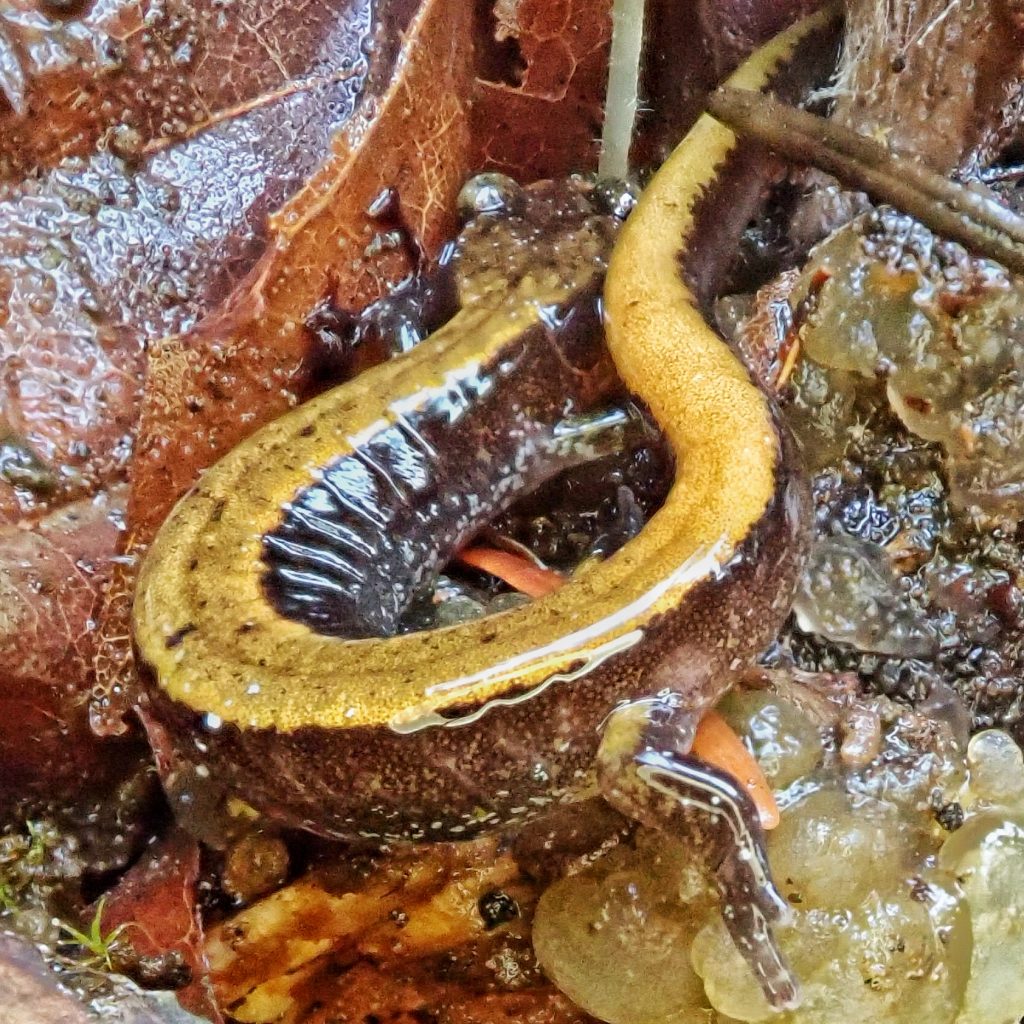
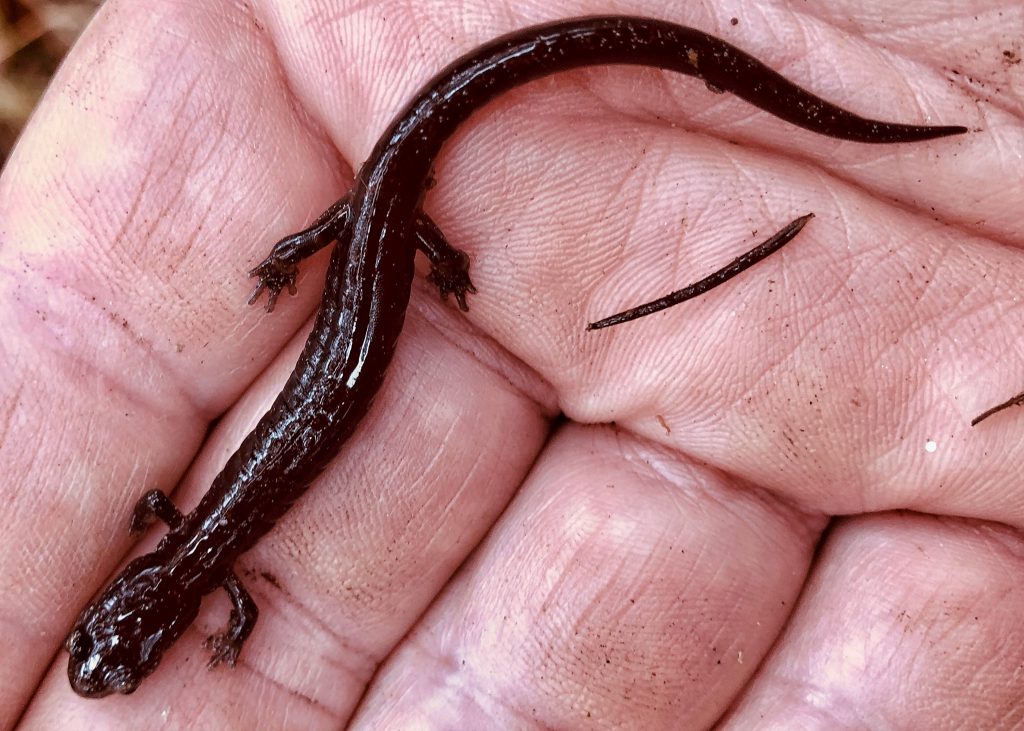
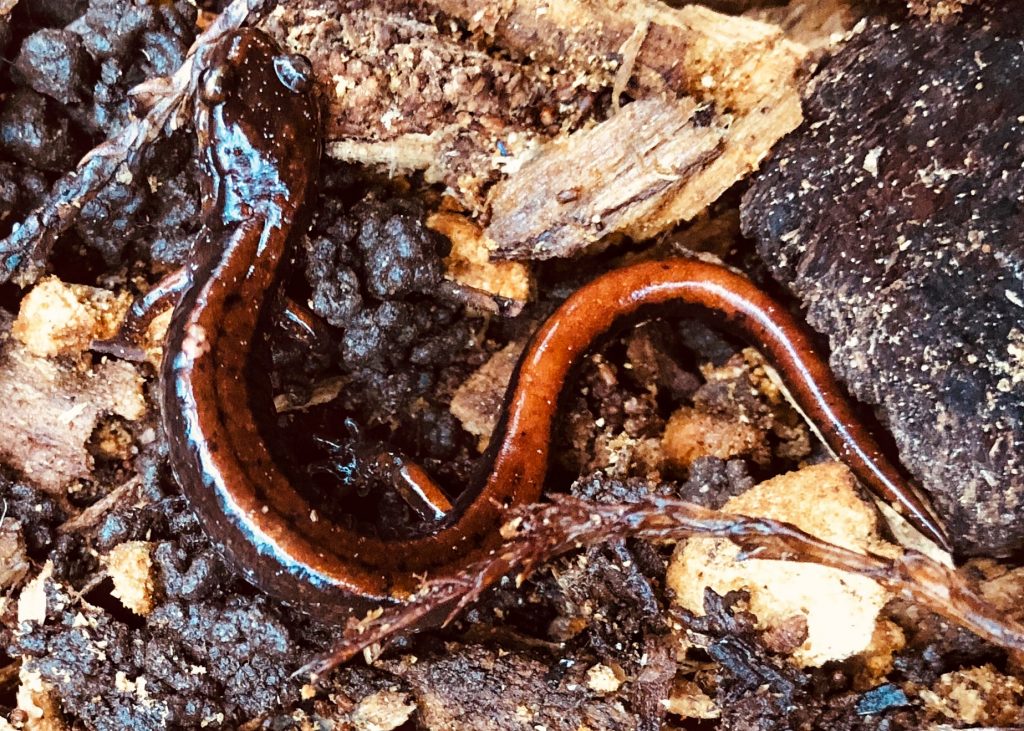
Piggyback ride is unusual foreplay! 😏
Fantastic photographs showing the wide range of color in Red-backed (er Multi-colored?) Salamander.
Thank you, Bruce!